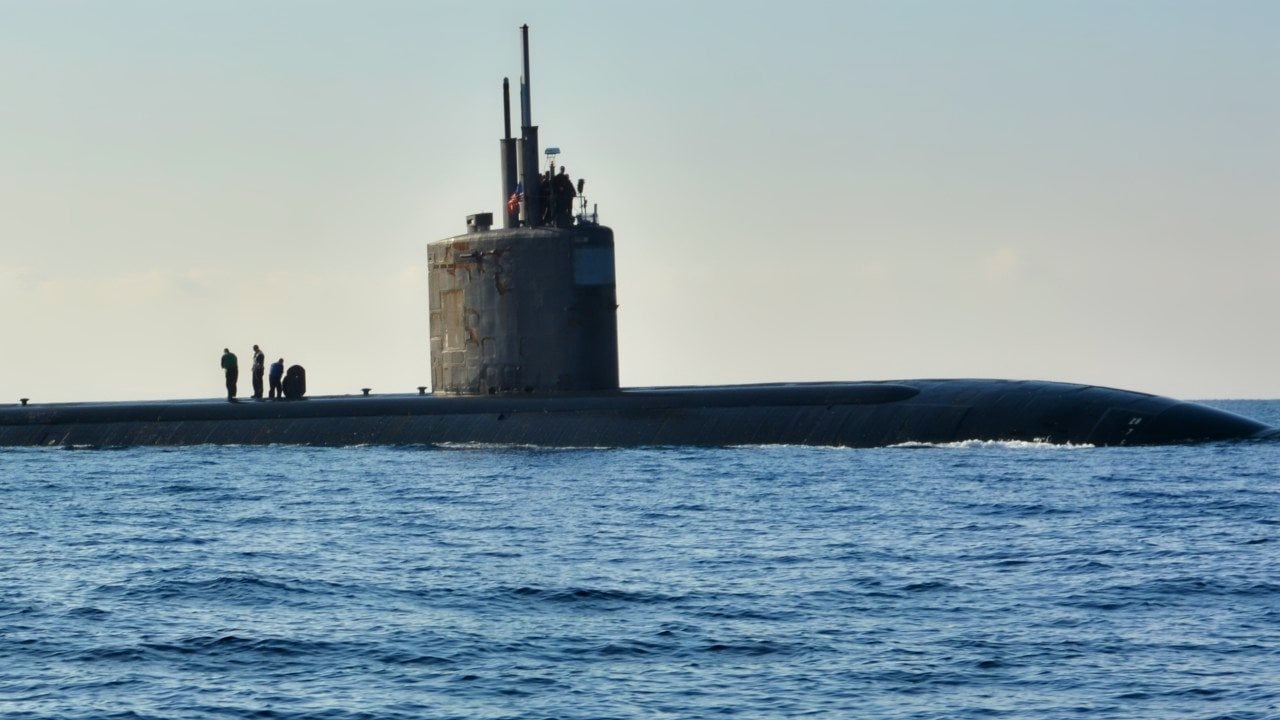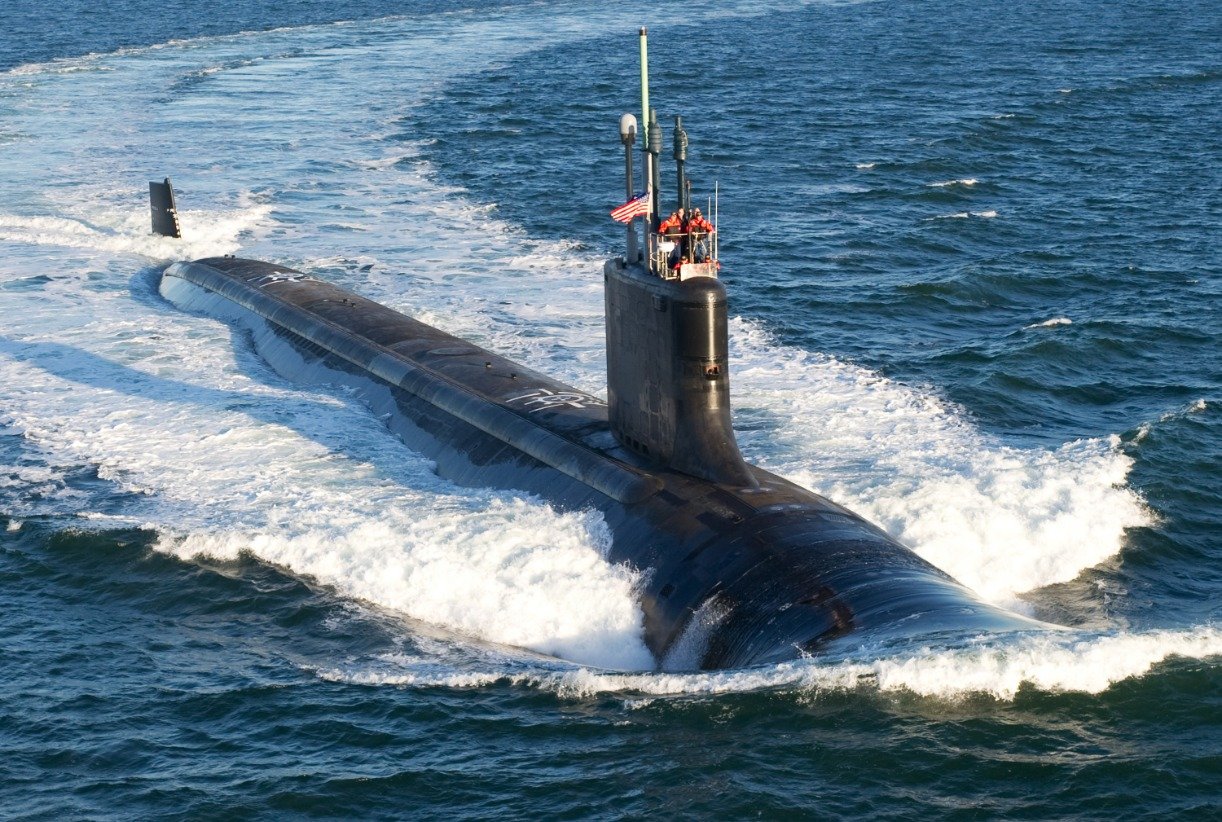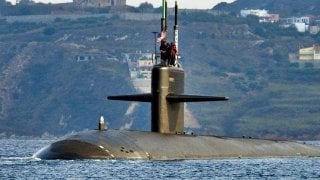$3,500,000,000 Mistake: 2 U.S. Navy Nuclear Attack Submarines Collided
In March 2009, the USS Hartford, a nuclear-powered attack submarine, collided with the USS New Orleans, an amphibious transport dock, in the Strait of Hormuz. The Hartford was operating at periscope depth after prolonged operations in the Middle East, and its crew was fatigued from 63 days at sea.
What You Need to Know: In March 2009, the USS Hartford, a nuclear-powered attack submarine, collided with the USS New Orleans, an amphibious transport dock, in the Strait of Hormuz. The Hartford was operating at periscope depth after prolonged operations in the Middle East, and its crew was fatigued from 63 days at sea.

-The collision resulted in significant damage: the New Orleans sustained a 16-by-18-foot hole in its fuel tank, while the Hartford suffered damage to its periscope, sail, and bow plane. Fifteen sailors aboard the Hartford were injured.
-An investigation revealed 30 tactical and watchstanding errors, including crew fatigue and complacency.
-The incident cost the Navy approximately $3.5 billion (2024 dollars) in repairs and led to disciplinary actions against the commanding officers and several crew members.
A $3.5 Billion Mistake: How Two U.S. Navy Submarines Crashed in Peaceful Waters
Warships are expensive.
The craftmanship and resources required to design and build a modern warship require anywhere from hundreds of millions of dollars on the lower end of the spectrum to several billion on the higher. The technology that goes into a warship is also very expensive and most often classified. The training for the crew to attain a level of seamanship and mastery of the weapon systems is also an expensive and arduous process.
So, when two warships collide in peaceful waters, the cost beyond any physical, operational, or reputational harm is literally quite high. That is especially the case when a nuclear-powered attack submarine is involved in a collision.
The USS Hartford v. the USS New Orleans
On March 20, 2009, the USS Hartford (SSN 768) was cruising at periscope depth in the Arabian Sea. The nuclear-powered attack submarine was supporting U.S. military operations in the Middle East.
Nearby, the USS New Orleans, an amphibious transport dock (LPD 18) also supporting military operations in the Middle East, was sailing in the Strait of Hormuz.
Both warships were feeling the strain of military operations and life at sea. But the nuclear sub was heading away from the combat zone, and the crew was looking forward to some rest.
Then, all of a sudden, at approximately 0100 local time, the two warships collided.
The USS New Orleans suffered a 16-foot-by-18-foot hole in its fuel tank, while the USS Hartford damaged its periscope, sail, and bow plane. Moreover, 15 sailors on board the nuclear sub were injured by the shock of the collision.
The Navy’s investigation found 30 tactical and “watchstander” errors that contributed to the collision, including the presence of at least five members of the crew who were known to be “sleepy” during watch.
“There were a whole host of watchstanders that failed to recognize the sensor data that was presented to them,” Submarine Force commander Vice Adm. Jay Donnelly had said a few months after the incident. Donnelly had added.

Sleep deprivation is common in the military regardless of the specialization and role of a troop. Part of basic and advanced training is to make troops accustomed to operating while tired and also push themselves. Sleeping on the watch is one of the most dangerous things a troop can do and can literally lead to deaths both in times of peace and especially in war.
According to the Navy, correcting any of the 30 errors could have prevented the incident.
“There was a great deal of complacency involved in the crew,” Donnelly had added. “They had been at sea for 63 days operating in areas with high contact density.”
The skipper, Commander Ryan Brookhart, and the high-ranking enlisted man, Chief of the Boat Master Chief Stefan Prevot, were both relieved of their duties, while several other officers and sailors faced non-judicial punishment, which is almost always a career killer.
Overall, the Navy had to pay approximately $3.5 billion (2024 dollars) to fix the damage on both ships.
Unfortunately for the Navy, the collision wouldn’t be the last one nor the most serious.
About the Author:
Stavros Atlamazoglou is a seasoned defense journalist specializing in special operations and a Hellenic Army veteran (national service with the 575th Marine Battalion and Army HQ). He holds a BA from the Johns Hopkins University and an MA from the Johns Hopkins’ School of Advanced International Studies (SAIS). His work has been featured in Business Insider, Sandboxx, and SOFREP.
Image Credit: Creative Commons and/or Shutterstock.


